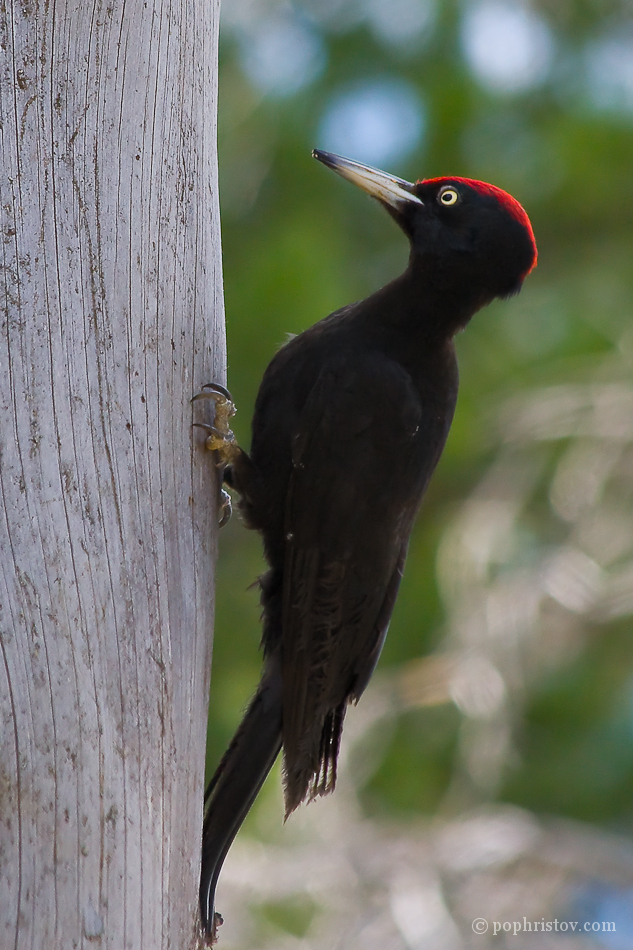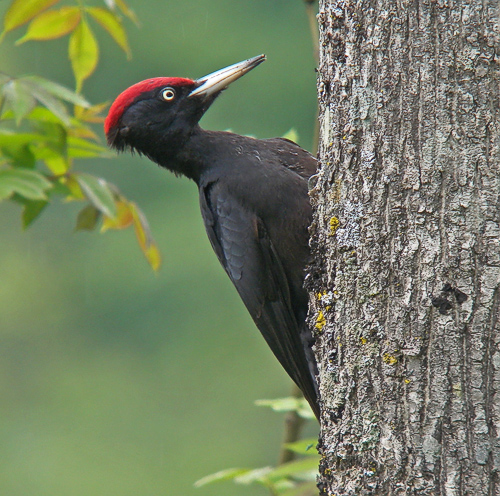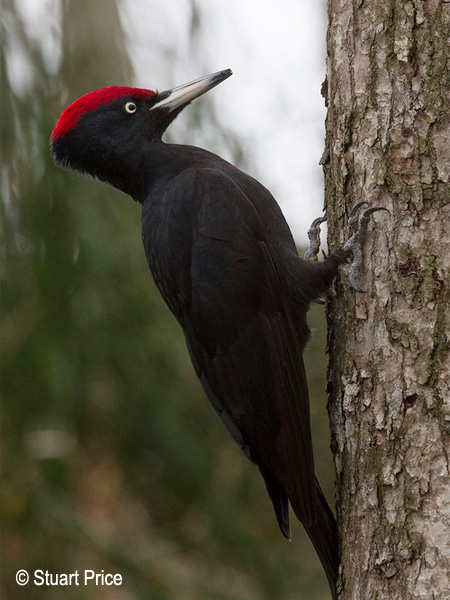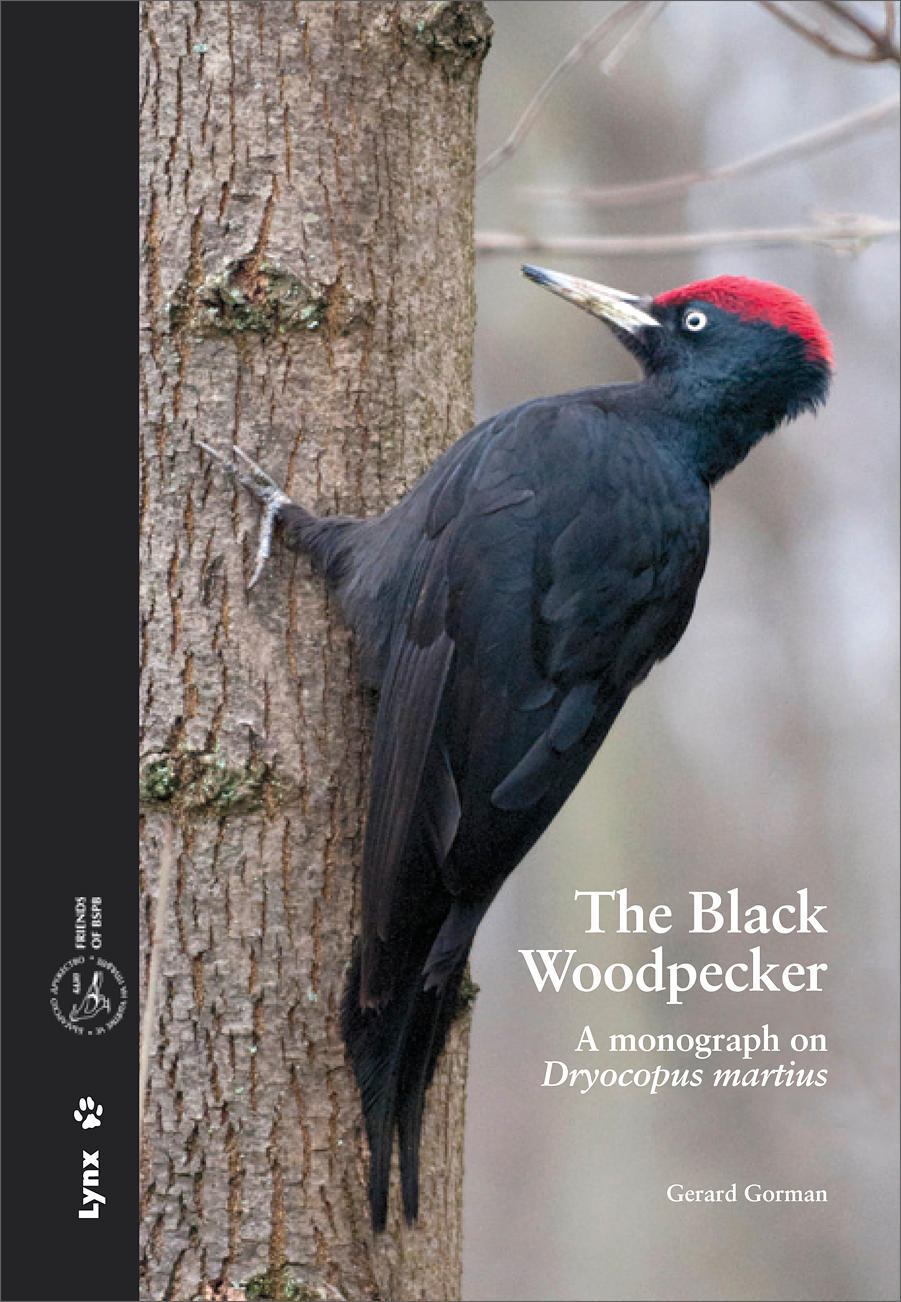
Dryocopus martius
SUBFAMILY
Picinae
TAXONOMY
Picus martius Linnaeus, 1758, Sweden. Two races recognized.
OTHER COMMON NAMES
French: Pic noir; German: Schwarzspecht; Spanish: Pito Negro.
PHYSICAL CHARACTERISTICS
17.7–22.4 in (45–57 cm); 9.2–13 oz (260–370 g). Crow-sized;
black, pale bill, and whitish eyes; male has raspberry red
crown; female a red nape; juveniles similar to adults, but duller,
looser-textured plumage.
DISTRIBUTION
Cool-temperate Eurasia; from western Europe north to the
Arctic Circle in Scandinavia and east to Japan and Kamchatka.
D. m. martius, most of range except for southwestern China
and Tibet; D. m. khamensis, southwestern China and Tibet.
HABITAT
Mature coniferous, mixed, or deciduous forest. A pair normally
needs 750–1,000 acres (300–400 ha) of forest.
BEHAVIOR
Resident; solitary or in pairs; spring drumming on resonant
limb or stub is very loud and low in tone; climbs by “hopping”
up a trunk or limb; flies with direct “crowlike” flight.
FEEDING ECOLOGY AND DIET
Feeds mostly on ants and their larvae and pupae, but also takes
larvae of wood-boring beetles, occasionally other insects, nuts,
and seeds, and rarely fruit.
REPRODUCTIVE BIOLOGY
Courtship may begin in January, but nesting is primarily late
March to May; nest usually placed high in a large stub. About
75% of nests are in decayed but living trees. Clutch size 3–5
eggs; incubation lasts 12–14 days; young usually fledge at
27–28 days. Both parents incubate and care for young; young
are fed by regurgitation.
CONSERVATION STATUS
Not threatened; many populations increased during the late
twentieth century, though there were local declines associated
with habitat fragmentation and loss.
SIGNIFICANCE TO HUMANS
None known, except as a symbol of “wildness.”
Other popular Animals
Photo Gallery of - Black woodpecker




 Animalia Life
Animalia Life